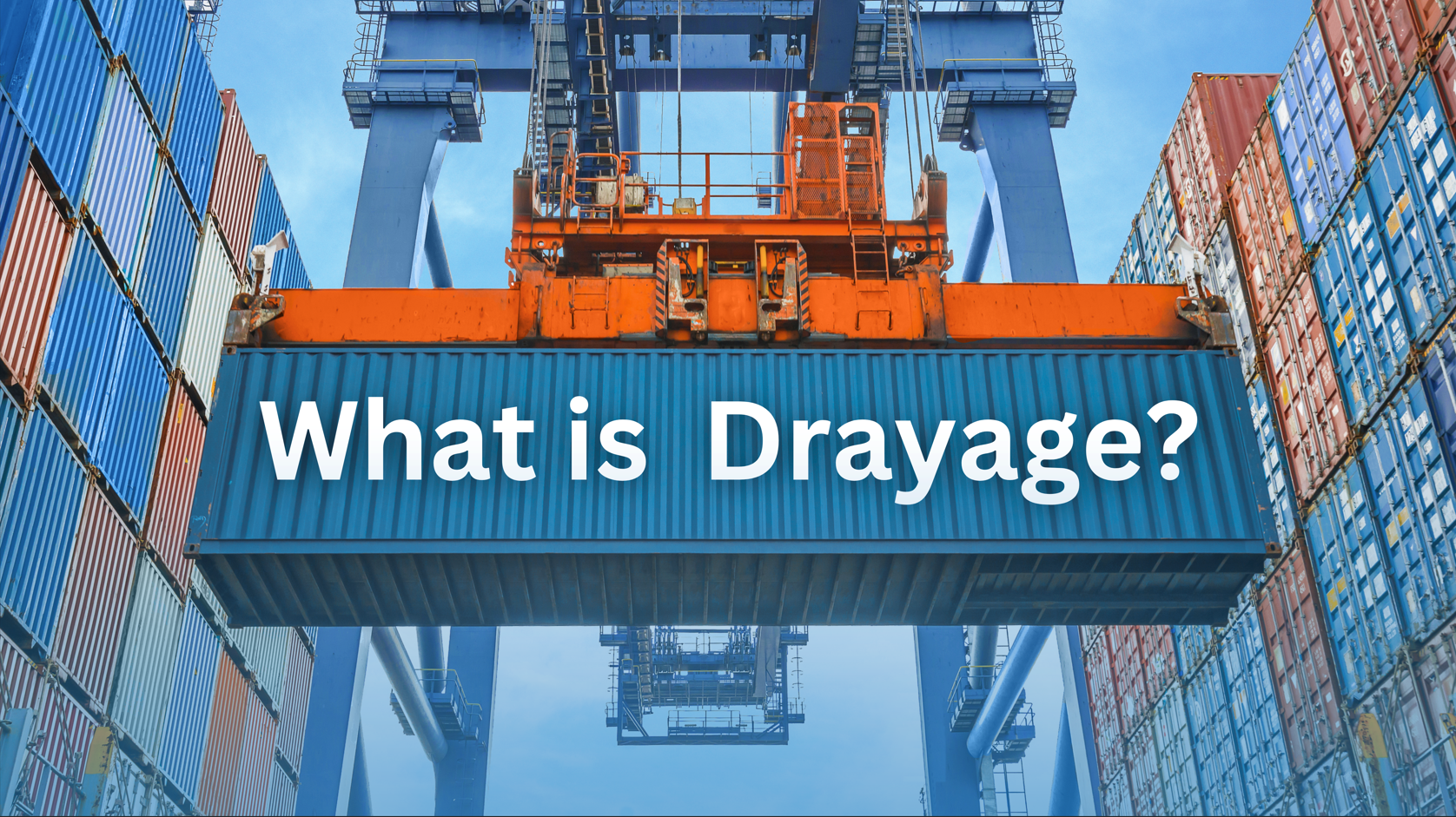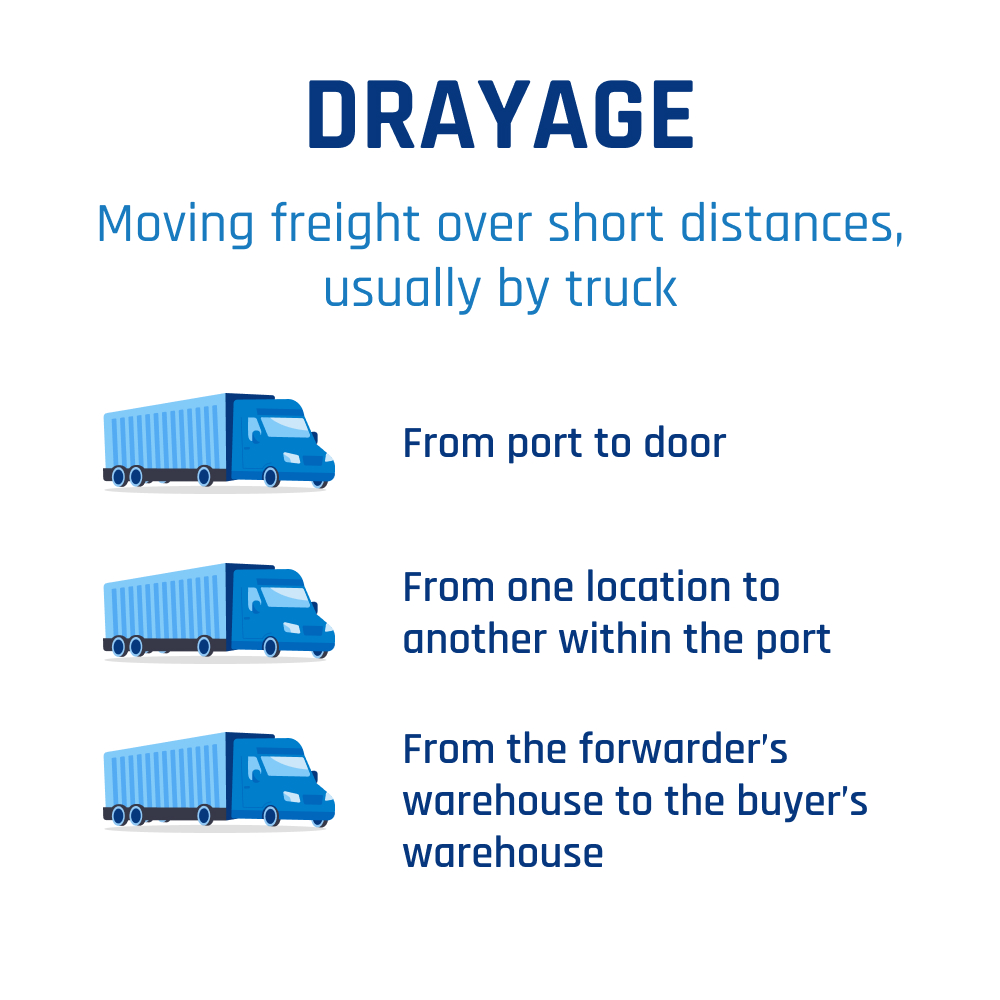Demystifying Drayage: A Closer Look at Logistics Lingo
In the intricate world of logistics, one term that might pique your curiosity is “drayage.” What exactly does it mean, and why is it called drayage? In this blog post, we’re going to dive into the depths of this logistics terminology with Mr. Awear Foad, a logistics expert from Sulaymaniyah branch, who will explain the ins and outs of drayage, its significance, and provide examples to demystify this concept.

Understanding Drayage:
At its core, drayage refers to the short-distance transportation of goods, usually within a local or metropolitan area. It’s a crucial component of the larger logistics chain and is typically involved in moving goods between ports, rail terminals, warehouses, and distribution centers. Drayage is a bridge that connects various modes of transportation, ensuring that cargo smoothly transitions from one point to another.
Why is it Called Drayage?
The term “drayage” has an interesting historical origin. It harkens back to the days when goods were transported using horse-drawn wagons known as “drays.” These drays were primarily used for short hauls within cities or from ports to nearby destinations. Over time, as transportation methods evolved, the term drayage stuck, even though the modes of transport changed from horse-drawn wagons to trucks.

Examples of Drayage:
Let’s take a closer look at some common scenarios where drayage is involved:
- Port to Warehouse: Imagine a container ship arriving at a bustling port. The containers onboard need to be moved from the ship to a nearby warehouse for distribution. Drayage services would come into play here, using trucks to transport the containers over short distances.
- Rail Terminal to Store: Cargo arriving at a rail terminal often needs to be transported to its final destination, which could be a retail store or distribution center. Drayage trucking companies are responsible for this vital link in the supply chain.
- Airport Cargo: Drayage isn’t limited to seaports and railways; it’s also essential at airports. Goods arriving via air freight might require short-distance trucking to reach their intended destinations.
Drayage Services
In the vast and complex world of logistics, there’s a term that often goes unnoticed by the average consumer but plays a pivotal role in ensuring the smooth flow of goods from one point to another: drayage services. These services are the unsung heroes of the supply chain, facilitating the movement of cargo over short distances and bridging the gaps between various modes of transportation. In this blog, we’ll take a deep dive into the world of drayage services, exploring what they are, why they matter, and their essential role in the logistics industry.
Drayage Services Defined:
At its core, drayage refers to the short-distance transportation of goods, typically within a local or metropolitan area. Drayage services involve moving cargo between transportation hubs, such as ports, rail terminals, warehouses, and distribution centers. These services are instrumental in ensuring that the logistics chain remains unbroken and that goods transition seamlessly from one mode of transportation to another.
The Significance of Drayage:
- Efficiency in Supply Chain: Drayage services play a critical role in maintaining the efficiency of the supply chain. They ensure that cargo moves swiftly from one location to another, minimizing delays and bottlenecks.
- Intermodal Connectivity: In the modern logistics landscape, goods often travel through multiple modes of transportation—ships, trains, airplanes, and trucks. Drayage services act as the connective tissue between these modes, enabling the transfer of cargo with ease.
- Cost-Effective Transport: Drayage services are cost-effective for short-distance transport, reducing the overall cost of shipping. By optimizing routes and minimizing handling, they contribute to cost savings.
- Local Expertise: Drayage providers are well-versed in local regulations, traffic patterns, and conditions. This expertise ensures that cargo reaches its destination safely and on time.
- Last-Mile Delivery: Drayage services can extend to last-mile delivery, where goods are transported from a transportation hub to their final destination, such as a retail store or customer’s doorstep. This is particularly crucial for e-commerce and urban logistics.

Mr. Awear Foad’s Insights:
Now, let’s hear from Mr. Awear Foad, a logistics expert from Sulaymaniyah branch, who offers his perspective on the importance of drayage:
“Drayage may seem like a small piece of the logistics puzzle, but it’s anything but insignificant. Efficient drayage operations ensure that goods move swiftly and reliably within a supply chain. This, in turn, minimizes delays, reduces costs, and ultimately helps businesses meet customer demands efficiently. In the dynamic world of logistics, the significance of drayage cannot be overstated.”
In conclusion, drayage plays a pivotal role in ensuring the smooth flow of goods in the logistics industry. Its historical roots may lie in horse-drawn wagons, but its contemporary importance is undeniable. It’s the invisible hand that keeps supply chains running, connecting different transportation modes and facilitating the movement of goods from one point to another. Thanks to Mr. Awear Foad for shedding light on this essential aspect of logistics!
Date of Publication: 10 September 2023
Published by:
Communication Department and PR
